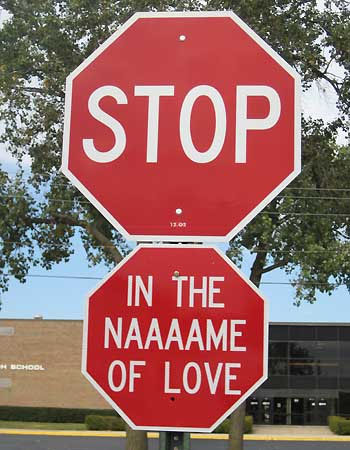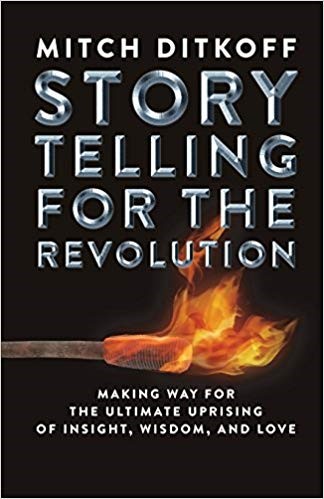The Origins of the Stop Sign

I've been doing some fascinating research lately on the origins of common objects in our lives -- things we see daily, but often take for granted. Like the Stop Sign, for example.
Most people think the Stop Sign was created to regulate traffic. Not true. According to Dr. Ellison Burke of the Global Institute for Slowing Things Down Before You Hurt Yourself, the origin of the Stop Sign has nothing to do with traffic -- and dates back several thousand years.
Historical references to the Stop Sign have been noted in more than 27 civilizations, most notably Babylonia, Egypt, Mesopotamia, Sumeria, Crete, Rome, and the Han Dynasty.

According to social scientists, each of these civilizations experienced one or more periods of rapid growth now referred to in the literature as "Societal Acceleration Syndrome" -- the way in which daily transactions speed up in proportion to a civilization's escalating Gross National Product.
In other words, speed has become one of the most statistically predicable indicators of a civilization's development and, as I will note later in this article, eventual decline.
My research doesn't end here, however. In each of the above-mentioned civilizations, there have always been a small, but vocal group of citizens who -- concerned about the quickening pace of daily life -- have warned the masses about this dangerous phenomenon.
Indeed, a joint longitudinal study conducted by the Yukon Archeological Institute and the Asian Society for Shorter Haiku, has revealed that this "small, but highly committed group of socially responsible citizens" has made repeated efforts to diffuse their respective society's "escalating addiction to velocity."
In Sumeria, for example, a fringe group of philosophers and poets routinely posted "Styopsian" signs at strategic intersections throughout the country -- not to stop traffic, but to stop unnecessary "mind movement."
Their effort resonated with the citizenry and eventually led to the widespread appearance of what modern day sociologists now refer to as "stop signs" -- in urban centers, villages, cattle crossings, and universities.
One of the most curious facts I've unearthed in my research is this: For the past 2,000 years, Stop Signs, regardless of the country of origin, have always been octagonal.
Apparently, each side of this iconic 8-sided, cross-cultural symbol for stillness, has been imbued with a secret teaching of great import:

1. Slow down
2. Pay attention
3. Look around
4. Pause
5. Look within
6. Breathe deeply
7. Appreciate
8. Move consciously
And so... the next time you see a Stop Sign, you may want to remember that you, no matter where you think you're going or how quickly you need to get there are, in fact, in the act of receiving one of the most timeless of teachings -- one that preceded Facebook, Instagram, Snapchat, texting, and Donald Trump tweeting in the middle of the night.
Next week... the YIELD SIGN.
ED NOTE: It has recently come to my attention that some readers of this blog have questioned my research methods and the veracity of my findings. A quick Google search of "Dr. Ellison Burke" and the "Global Institute for Cross-Cultural Studies," they claim, reveals not a single link. Frankly, I am baffled by their assertions and have assigned five of my brightest research assistants to get to the bottom of the matter. In the meantime, as I put to rest the niggling, naysaying deflections of my detractors, you may want to contemplate the timeless words of modern-day social scientists, Simon and Garfunkel: "Slow down, you're moving too fast, you gotta make the morning last."
This story NOT included in this book
This story NOT included in this website
This story NOT included in this training
Stop Signs 'R Us
Post a comment
Thanks for signing in, . Now you can comment. (sign out)
(If you haven't left a comment here before, you may need to be approved by the site owner before your comment will appear. Until then, it won't appear on the entry. Thanks for waiting.)







 If you like this blog, you might also like Mitch's other two blogs:
If you like this blog, you might also like Mitch's other two blogs: 